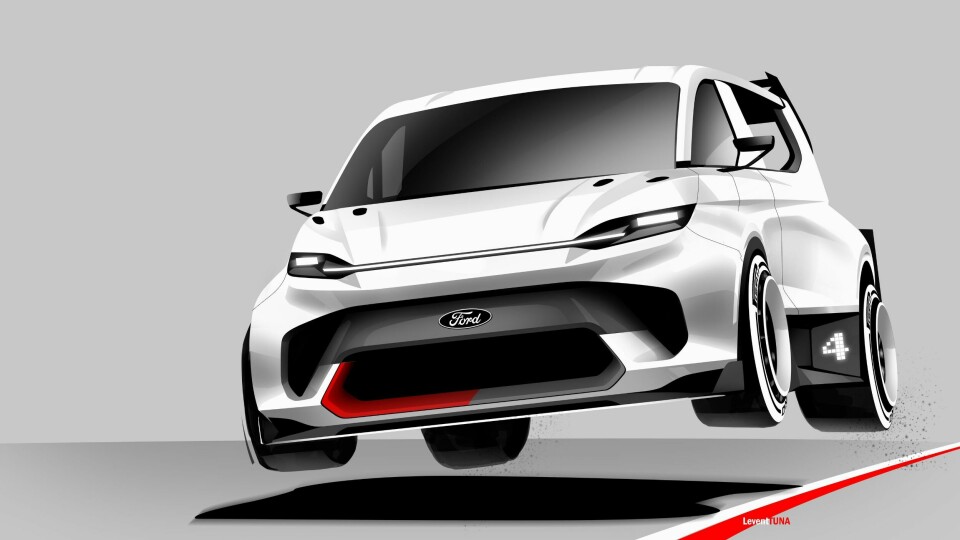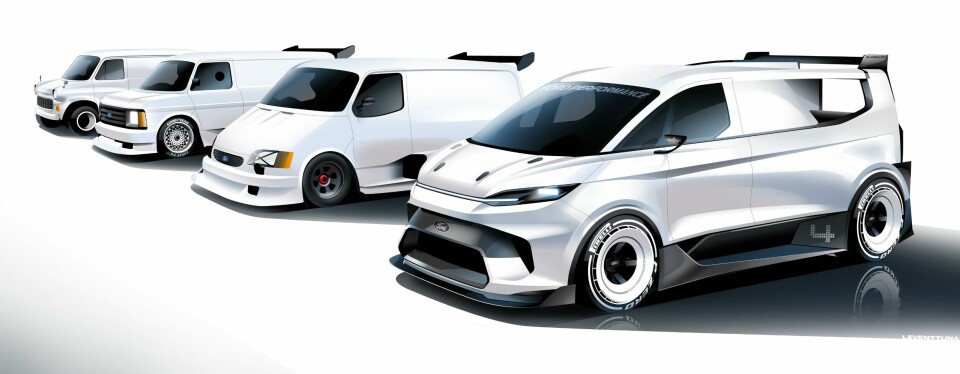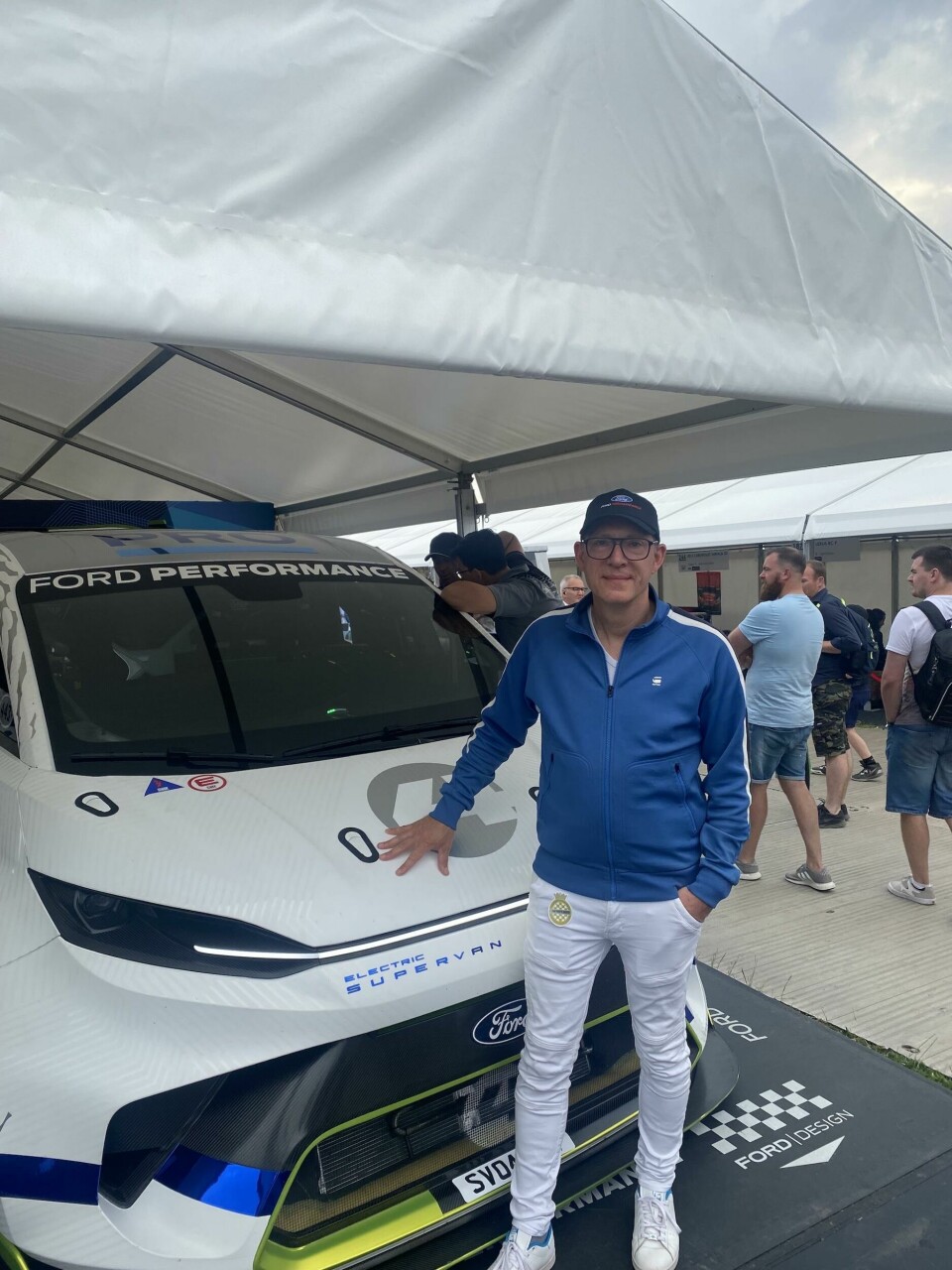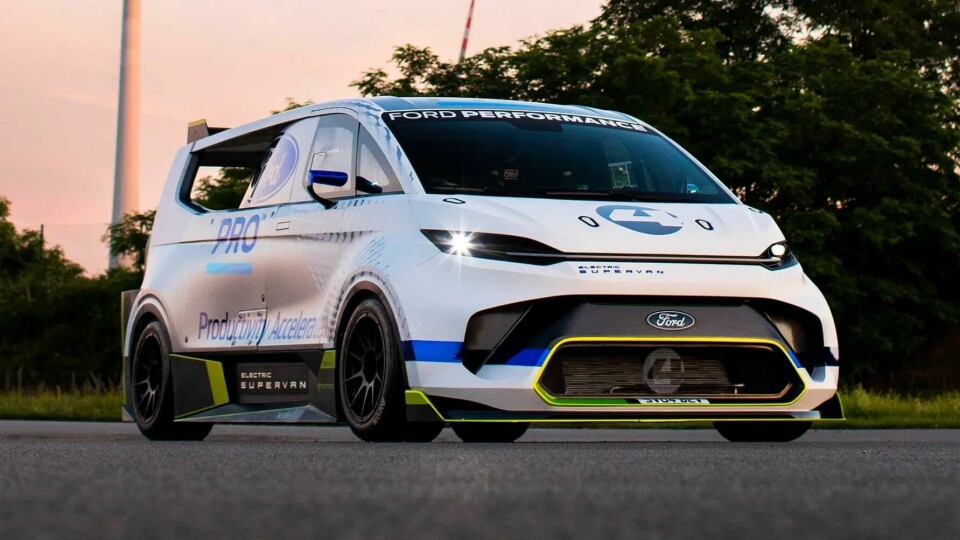
Interview: Amko Leenarts on SuperVans, SUVs and the return of aero design
Car Design News caught up with Ford’s design director of Europe Amko Leenarts at Goodwood to discuss the SuperVans project, the return of aero design and why the era of the SUV might be over
“This is the fastest workhorse in the world,” said a mildly breathless Amko Leenarts at the recent Goodwood Festival of Speed. Ford’s design director of Europe had just experienced first-hand the velocity of the OEM’s SuperVans project, taking on the famous Goodwood Hillclimb with an eerie silence that belied its 2000ps output. It was fair to say that much like his van, he was buzzing.
“It was completely weird. All the senses you use to position yourself, the sound of the engine as you go faster and faster…there’s nothing. It becomes a blur,” he said.
Ford has a history of producing rapid vans. Such was the pace of the Ford Transit; it became the preferred choice of the criminal fraternity who needed a speedy getaway from the arm of John Law. However, the pace of the SuperVan, which Leenarts explains is an exaggerated version of the E-Transit Custom unveiled in Barcelona earlier in 2022, is rivalled only by the rapidity of the design development.

“It was designed purely digitally in four and a half weeks. No proportional model or foam or clay – we just sent the data to suppliers, Stard. When I came to the Goodwood circuit, I saw it for the first time.”
Proportions, nevertheless, were the main challenge, namely balancing the need for aerodynamics against the need to be a van. Consequently, more radical moves to streamline the form were quickly shelved. However, the solely digital design was only possible because the SuperVan project was based on an existing production model.
“We know the E-Transit Custom so we knew what we could play around with. The language we used, apart from the new front end, the body side and the rear are just exaggerations of the actual car. You can easily do these things entirely digitally if you know you can trust your base points blindly.”
Everybody that has super sharp lines in their design language, which go all over the place, is screwed – it is just physics
Nevertheless, as streamlining and aero design becomes a way to extend range, Leenarts predicts challenges ahead for the dominant SUV typology as electrification kicks in. “People wanted space and to feel safer, so there was this war going on as to how high you would sit. SUVS are worse for weight, worse for fuel and worse for aerodynamics.
“Now the EV revolution is so strong that aerodynamics is becoming very important again. Anything you do that increases the vehicle’s height loses you 40-50 km of range.

“The cars that claim the highest ranges are the lowest – they are going back to cab-forward designs and low noses: the opposite of the SUV. There will be a change in the way we design our silhouettes. We cannot get away with it anymore.”
So, will we see a move away from the SUV or is there a new typology waiting to be invented?
“It depends on what we call an SUV. The (Peugeot) 408 is a sedan/hatchback, which is a bit SUVish. That is totally driven by what we are talking about.
“When aero takes over things become softer, there is no getting away from that. Everybody that has super sharp lines in their design language, which go all over the place is screwed – it is just physics. With softer shapes, we have to find other ways to get personality again.”
Leenarts, however, is tremendously excited about the future, pointing out the possibilities of the new design landscape.
“The wheelbase is always larger, overhangs are shorter and wheels became bigger – it is a designers dream. The only thing we have to make sure of is that the cars are not too high.
“Compared with the 70s or the 80s, there is so much more choice: hypersmall to hypersport, and everything in between. Everything you can combine is a potential new sub trend. It is just awesome.”




